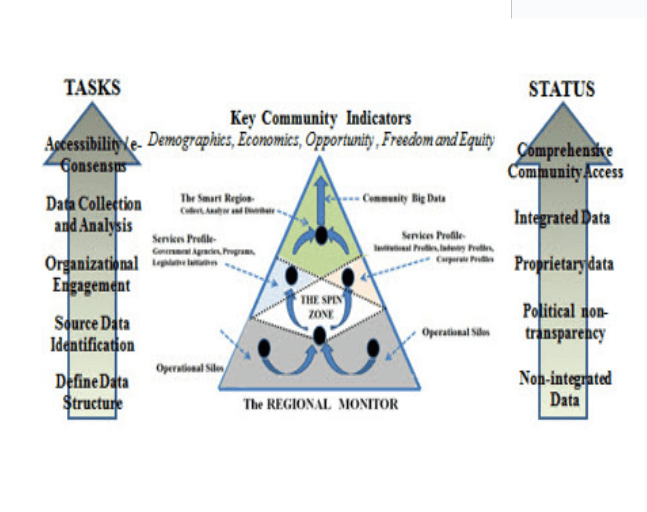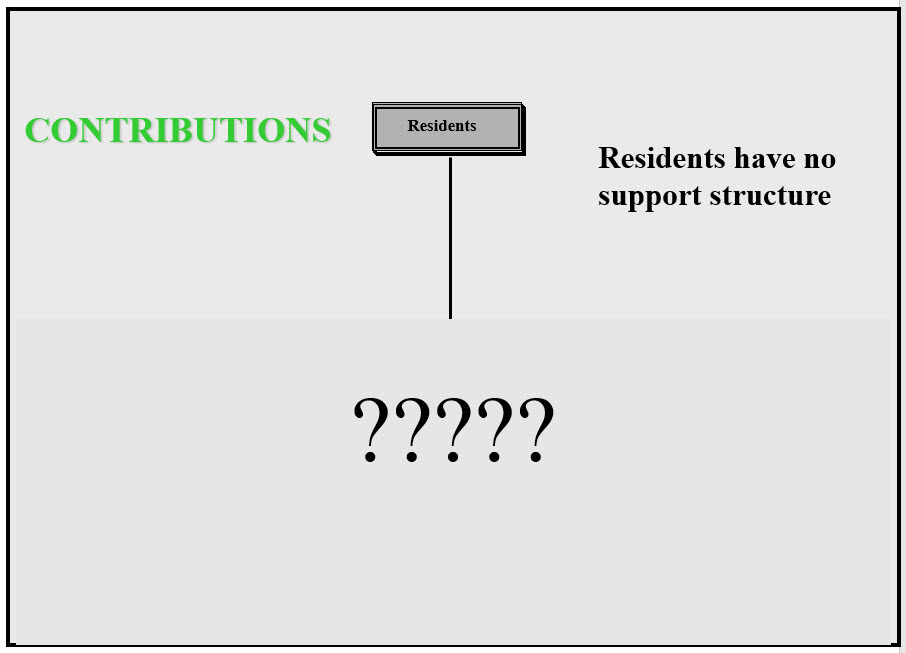For the Community to shape its own future, it must have access to data and metrics to measure progress.
TCR was formed in 1992 with a motto of “Building Stronger Communities through Technology” and a rural focus. After two years of research, the motto changed to “Building Stronger Communities through Telecommuting”- the all encompassing term for using telecommunication services to replace a physical trip. With this challenge in mind, TCR has been dedicated to solving problems that the status quo institutions have failed to address.
As TCR researched and adopted its mission, it concluded that there were four impediments to TCR’s ultimate success:

…it is important to understand silos and the role of the Community Sector- Betsy Jordyn describes the roles of silos, good and bad, while Jeremy Rifkin discusses the value of an active Community Sector.
Government is supposed to be “of the people, by the people and for the people”. Although government always speaks of innovation and excellence, in reality, those values remain in the context of the status quo. It’s structure is based on silo’s and it defines community based upon pioneer surveyors and geologic features.
Although the foundations focus on community issues, they generally become silos as they select a single issue. In all three sectors, their engagement in broad challenges is at best tangential.
The Information Age Community is based upon functional integration and the market’s definition of Community.
…for the Community Sector, it is just not a fair fight!
A technology/AI based structure must be developed to strategically support the Community Voice.

TCR’s approach has been to identify a problem, evaluate options, develop a solution and then to pursue implementation strategies with potential partners. If that process is unsuccessful, TCR then explores options to overcome that blockage. The adjacent graphic illustrates this history.
It will take more than government. we need a vision and a mission for this technology revolution worthy of the century our children are inheriting. We need to ask the business leadership in every country to come to the table, to begin discussing this full transition of the nature of work, to sit down and collaborate with labor and government and community to create a seamless web of relationship between all these sectors and get down to the task of exploring how we share some of the vast potential revenue gains of this new technology revolution.
Jeremy Rifkin
TCR identified AI as an important tool in many of the Information Age Community components. The implementation of a concept as comprehensive as the Information Age Community is a big undertaking and TCR needed the tools and resources to implement it.
The U.S. Patent Office has recognized the uniqueness of the TCR effort by awarding TCR four patents; all are discussed elsewhere on this site. Each patent contains a variety of tools and strategies that collectively support the Information Age Community:

Phone Number
Jfsanger@telecommuter.org
4315 Virginia Avenue St Paul, MN 55126
The Information Age Community incorporates AI in many of its tools and strategies. It truly allows society to embrace the many benefits of the Information Age and the Freedom of Residential Choice that it provides. All six community types are affected by this reversal of the 200 year Industrial Age mindset and each must build upon the benefits of the old even as they adopt the new opportunities.
©All rights reserved,2025 Tele-Commuter Resources,Inc. Design and development by VibgyorWeb Technologies.